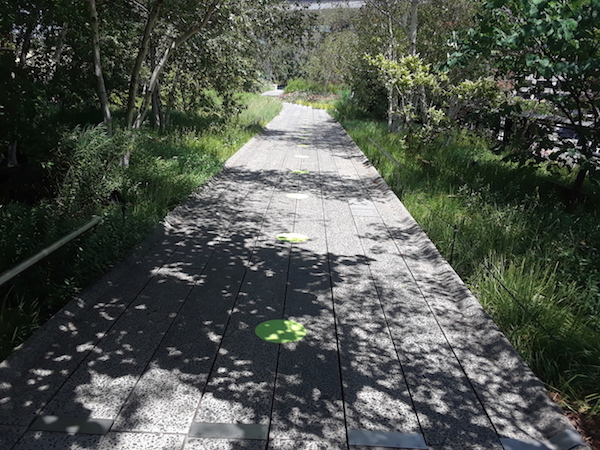
TEXT AND PHOTOS BY SCOTT STIFFLER | Having made the right call to close its gates in mid-March, just before New York City became the country’s coronavirus epicenter, the High Line remained off-limits for the next four months. On July 16, it reopened—no worse for the wear, and recalibrated to resonate with a world below that can’t say the same for itself.
First-time visitors won’t know the difference, so why tell? This is the version that becomes theirs. But anyone who’s walked the 1.45-mile elevated public park even once, or was a regular long before its final section was finished, will notice a certain conspicuous absence, and experience the High Line’s best act of reinvention yet.
That’s actually stretching it a bit, but not by much. Still, it’s hard to top what High Line co-founders Joshua David and Robert Hammond and their likeminded allies did between 1999 and 2009, to turn a decaying freight rail line into a West Side DOA (destination on arrival), years before the Whitney or Hudson Yards could claim the same status.
More on that later—because there’s something every visitor to the reopened High Line, newbies and veterans alike, can enjoy: Rules! Before entering the park, you’ll need to know about the single entry point, the truncated route, a limit on the number of visitors, required reservations, specific arrival times, and a multitude of public safety protocols.
What seems restrictive on paper is actually quite liberating in practice, the result of planning that began shortly after the park closed.
“We started thinking about it right away,” recalled Hammond, the High Line’s current executive director. “We wanted to open back up.”
Hammond and Friends of the High Line, the nonprofit that operates, maintains, and programs the park, would spend the spring and early summer working on the practical solutions and radical pivots that would make the park as risk-free as possible for visitors and staff.

“We knew there were some issues we needed to solve,” said Hammond, including a steep reduction in “the number of people, and dealing with the fact that we have a lot of eight-foot [wide] paths. And if you’re limiting the number of people on the High Line, how do you not have crowds at the base of the street?”
Their solution: Implore people to arrive within a small window of time, and encourage would-be visitors not to show up unannounced. Yes, a limited number of walk-up passes are available at the entrance each day, but guaranteed admission requires a free, timed-entry reservation, made in advance.
Passes are currently available through August 16. A new 1-week reservation period begins every Sunday. Visit thehighline.org/welcome for tickets.
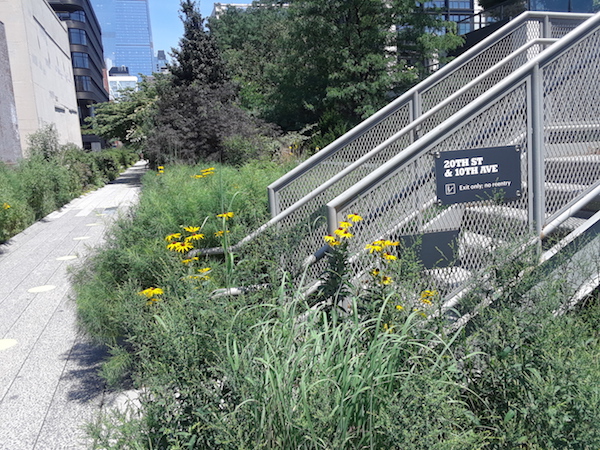
From Gansevoort Street, the park’s only current entrance point, small groups are admitted every 15 minutes. Once inside, foot traffic flows in one direction, north, to journey’s end (plans to expand the route north of 23rd St. are expected to be announced in the coming weeks). The Staircases at 14th, 16th, 20th, and 23rd Streets are exit-only, as are the elevators at 14th and 23rd (except for people with mobility access needs).
Bathrooms and water fountains receive “enhanced cleaning,” and there are temperature checks and symptom reporting for all staff, before they arrive to work. Food vendors are not present, the gift shop is closed, and popular activities (including garden tours and stargazing) are not currently taking place.
Owned by the City of New York and operated under a license agreement with NYC Parks, the High Line is obligated to follow City COVID-19 guidelines—which explains why masks must be worn when within six feet of another person, but are otherwise optional. Visitors are expected to arrive in compliance with, and continue to follow, City guidelines. Click here to find them on the Visitor Health & Safety page of the High Line’s website.
Early reviews are good, including one from Paul Groncki, president of the 100 West 16th Street Block Association, and a longtime Hudson Guild board member. He was one of the Chelsea residents invited to a preview just prior to the park’s reopening.
“The High Line is a great thing in its own right,” said Groncki, “but it gets jammed up. So I said, ‘Gee, it would be nice to see it in its not-very-crowded state.’ And it’s lovely, really beautiful. The flora has flourished magnificently since the winter months.”
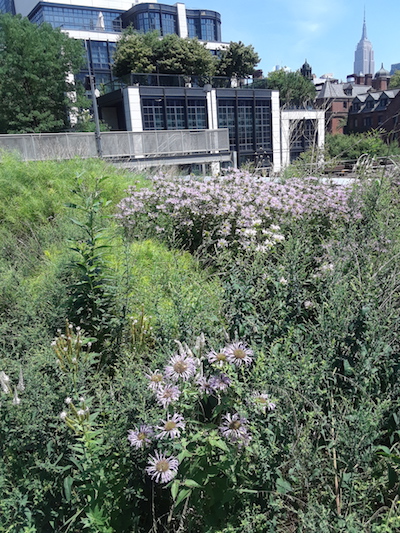
That the High Line “looks a little wilder these days,” said Hammond, is a look retained from what they found after circumstances allowed nature to have a little alone time. From the moment they locked the gates until work on the reopening began, he recalled, “No one was up there except, occasionally, New York City Parks Enforcement Patrols.”
When High Line gardeners returned, they found the park’s 500+ species of plants and trees thriving, thanks to a wet, cool spring and, said, Hammond, the absence of constant foot traffic.
“Even if one person in 1,000 steps in a planting bed or pulls a leaf from a tree,” he noted, “that has an impact.” Wild and wooly compared to its usual state, Hammond thinks it “actually looks better. Our gardeners left some of that wild growth in tact” to provide a glimpse of what he and co-founder David first saw in 1999, when the park was a destined-for-demolition freight rail line enveloped by “a thriving garden of wild plants,” as noted on the website’s History timeline.
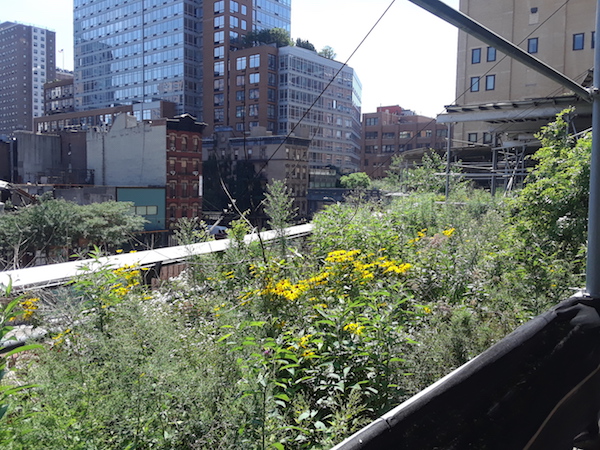
If that or anything else abovementioned piques your curiosity, there’s something you need to make peace with before clicking to confirm your reservation: If you go, and end up catching it, that’s a private matter between you and your free will.
“While we are committed to keeping you and our staff members healthy and safe,” reads the you-know-lawyers-made-them-put-that-there disclaimer, “we cannot guarantee you won’t be exposed to the Coronavirus (COVID-19). By visiting the High Line, you voluntarily assume all risks related to exposure to COVID-19.”
That’s pretty grim, and it almost kept me from going—but even more grim is the fact that everywhere we go once we’re out the door might be the place where that invisible thing we’ve avoided, so far, ends up finding us. And by us, I mean me. And if I died because I went for a walk in the park? My widower husband wouldn’t have one single dollar bill of sweet, sweet High Line lawsuit money to dry his salty tears with.
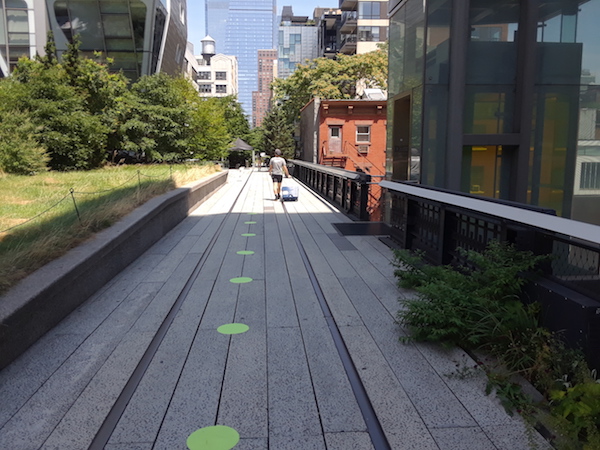
So it was reassuring to see, from the first planting of feet on the High Line, bright green circular markers placed six feet apart, in every direction, until the very last exit point. But no new ground is being broken here. The social distancing techniques and the speech you get before entering aren’t much different than what Trader Joe’s has been doing for months.
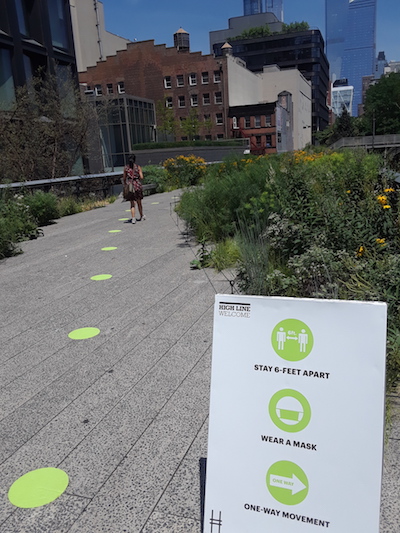
So why does it feel different? Why do I feel light, loose, at peace? And that’s when it hit: There aren’t many people here. This place had about eight million visitors last year—40,000 on an average summer weekend. I counted about 30 during my entire time in the park.
This is the High Line you wish you had, when it was sardine-can-level-congested. The sheer amount of personal space, the unobstructed sight lines to scenic views, and the silence—all traced to the limited amount of visitors—gave me a confidence in my surroundings and a comfort in my skin that evaporated from street-level Manhattan when COVID-19 began.

I went home wondering if this was a case of intelligent design, a happy accident, or the manufactured bliss of a person who needed it, egged on by the beautiful setting. So I composed a follow-up question, conveniently leaving out the part where I thought I might be a little nuts.
“The primary reason for the free timed entry system was to ensure visitor safety,” said Hammond, who noted there was a “second, experiential benefit—that you have the opportunity to enjoy the High Line with many less people—and visitors have been telling us how much they enjoy seeing the High Line this way.”
I hope they hear that from many more visitors. I hope they listen, and work out the logistics—because when the masks come off and talk turns to rebooting business as usual, this one should make the list.
For more information, visit thehighline.org and follow on Facebook, Twitter, Instagram.



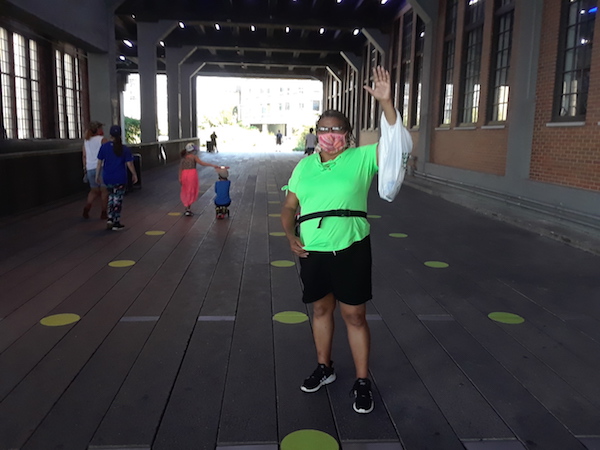
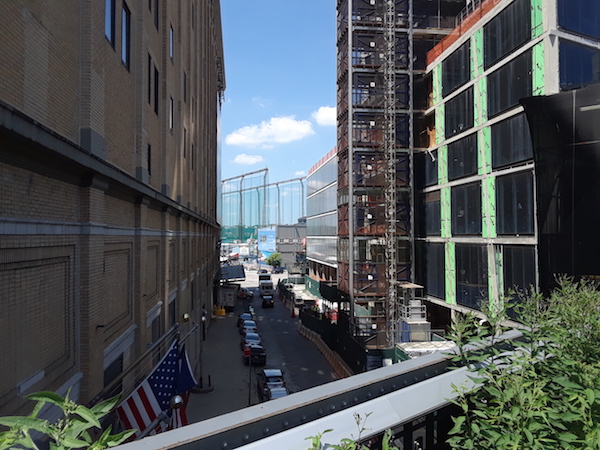
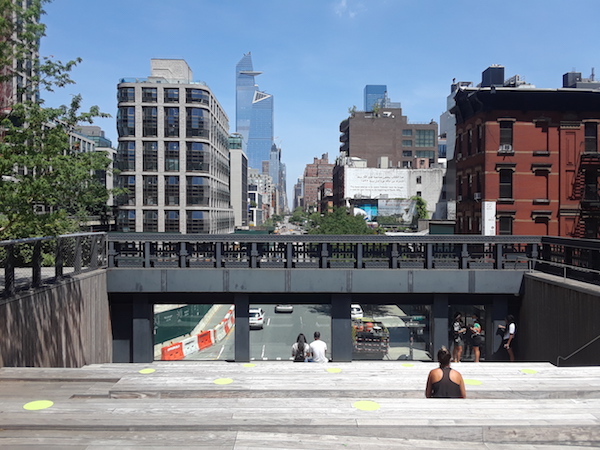

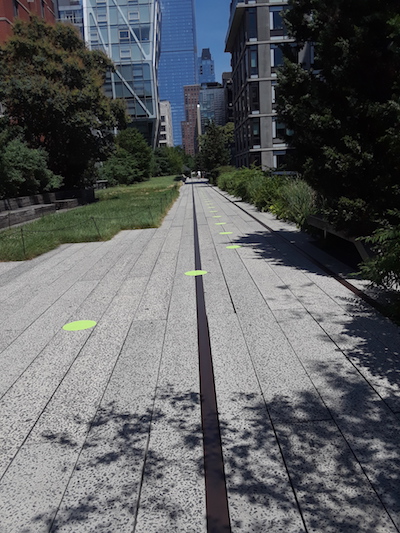
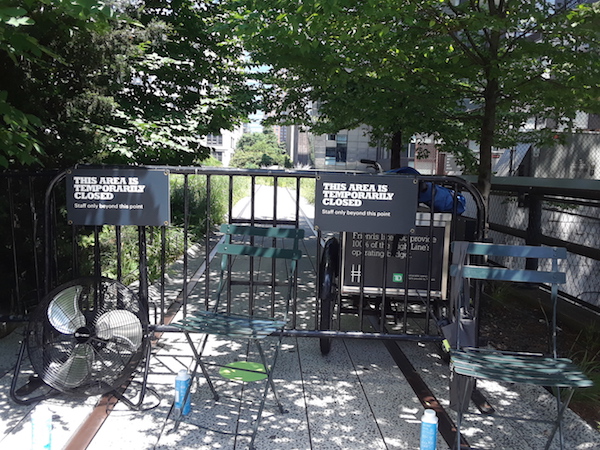
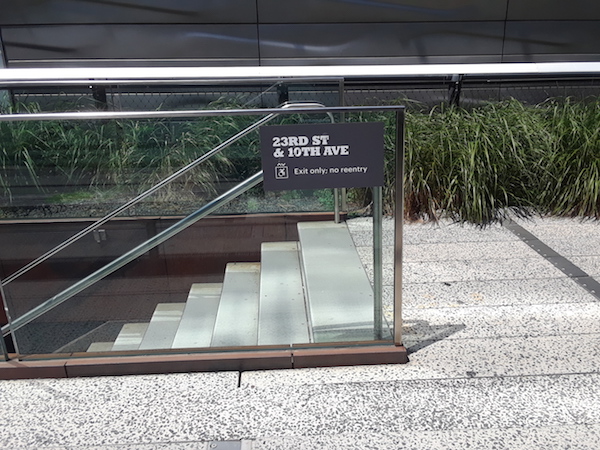
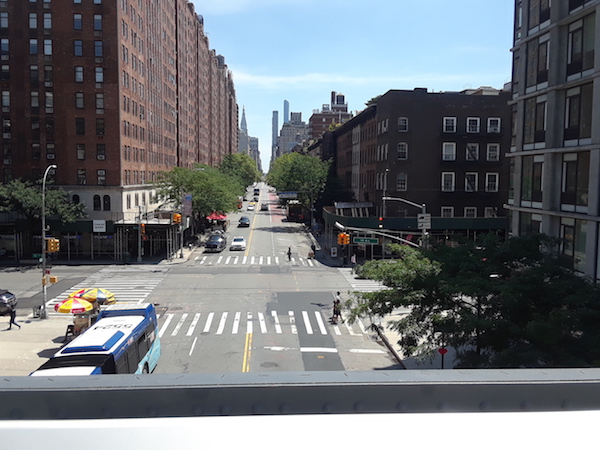

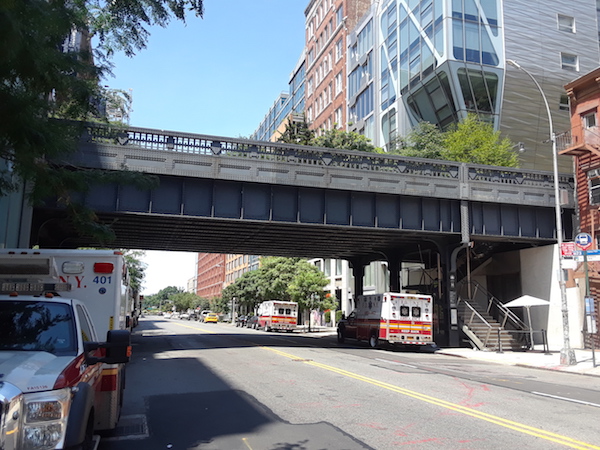
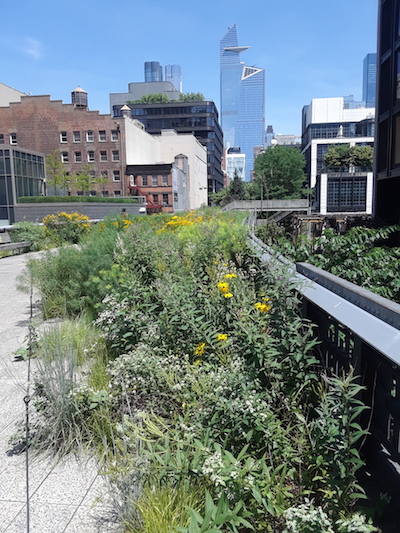
Chelsea Community News is made possible with the help of our awesome advertisers, and the support of our readers. If you like what you see, please consider taking part in our GoFundMe campaign (click here). To make a direct donation, give feedback about the site, or send a Letter to the Editor send an email to scott@chelseacommunitynews.com.

Pingback: sex việt
Pingback: บัตร psn
Pingback: คลินิกสมุทรสาคร
Pingback: Cartel disposable vape
Pingback: see this website
Pingback: Samui International muay thai stadium
Pingback: ทีเด็ดฟุตบอล
Pingback: Online medicatie kopen zonder recept bij het beste Benu apotheek alternatief in Amsterdam Rotterdam Utrecht Den Haag Eindhoven Groningen Tilburg Almere Breda Nijmegen Noord-Holland Zuid-Holland Noord-Brabant Limburg Zeeland Online medicatie kopen zonder r
Pingback: dmt pen for sale
Pingback: mejaqq daftar
Pingback: Bubble Tea
Pingback: Liberty Caps Mushroom
Pingback: แทงบอลออนไลน์
Pingback: more helpful hints
Pingback: Plus d'information
Pingback: Alexa Nikolas Gray nazi
Pingback: High Blood Pressure CBD
Pingback: situs slot gacor
Pingback: sbobet
Pingback: passive income ideas
Pingback: cornhole game
Pingback: maxbet
Pingback: buy smith and wesson guns
Pingback: สล็อตวอเลท ไม่มีขั้นต่ำ
Pingback: maxbet
Pingback: สล็อตวอเลท ไม่มีขั้นต่ำ
Pingback: cvv2 shop
Pingback: Vanessa Getty social
Pingback: คาสิโนออนไลน์เว็บตรง
Pingback: Fortune games
Pingback: it danışmanlık sözleşmesi